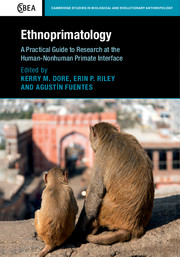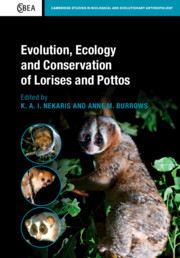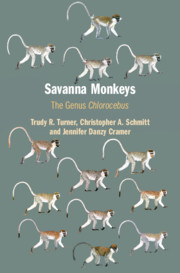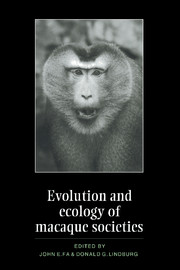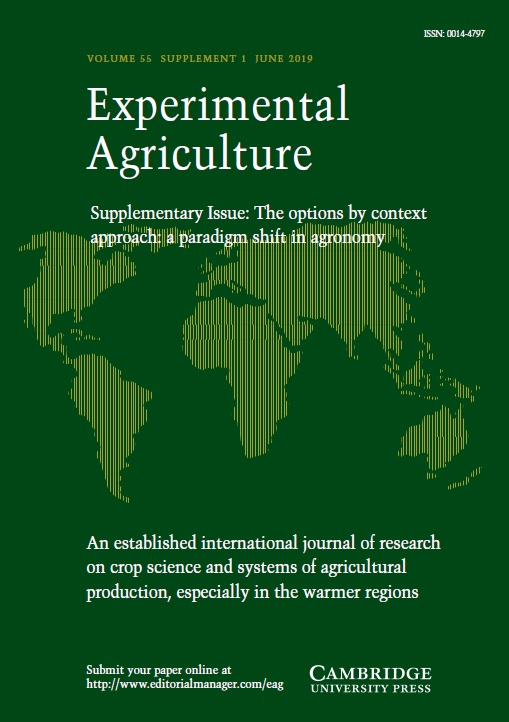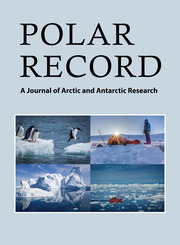Monkeys on the Edge
Ecology and Management of Long-Tailed Macaques and their Interface with Humans
$51.99 (C)
Part of Cambridge Studies in Biological and Evolutionary Anthropology
- Editors:
- Michael D. Gumert, Nanyang Technological University, Singapore
- Lisa Jones-Engel, University of Washington
- Author: Agustín Fuentes, University of Notre Dame, Indiana
- Date Published: June 2020
- availability: Available
- format: Paperback
- isbn: 9781108822558
$
51.99
(C)
Paperback
Other available formats:
Hardback, eBook
Looking for an examination copy?
If you are interested in the title for your course we can consider offering an examination copy. To register your interest please contact [email protected] providing details of the course you are teaching.
-
Long-tailed macaques (Macaca fascicularis) have a wide geographical distribution and extensively overlap with human societies across southeast Asia, regularly utilizing the edges of secondary forest and inhabiting numerous anthropogenic environments, including temple grounds, cities and farmlands. Yet despite their apparent ubiquity across the region, there are striking gaps in our understanding of long-tailed macaque population ecology. This timely volume, a key resource for primatologists, anthropologists and conservationists, underlines the urgent need for comprehensive population studies on common macaques. Providing the first detailed look at research on this underexplored species, it unveils what is currently known about the population of M. fascicularis, explores the contexts and consequences of human-macaque sympatry and discusses the innovative programs being initiated to resolve human-macaque conflict across Asia. Spread throughout the book are boxed case studies that supplement the chapters and give a valuable insight into specific field studies on wild M. fascicularis populations.
Read more- The first detailed examination of research into long-tailed macaques and their interactions with human societies
- A key resource for organizations and policy-makers struggling to develop strategies and legislation for developing peaceful human-macaque communities
- Case studies provide detailed information on specific activities being carried out in the field to better understand the population or to help resolve human-macaque conflict
Reviews & endorsements
"Fifty diverse contributors provide coverage in five major sections... a potentially valuable resource for a specialized audience."
R. A. Delgado Jr., Choice MagazineCustomer reviews
Not yet reviewed
Be the first to review
Review was not posted due to profanity
×Product details
- Date Published: June 2020
- format: Paperback
- isbn: 9781108822558
- length: 380 pages
- dimensions: 230 x 153 x 25 mm
- weight: 0.6kg
- availability: Available
Table of Contents
Foreword David Quamman
Preface
Acknowledgements
Part I. The Status and Distribution of Long-Tailed Macaques:
1. The common monkey of southeast Asia: long-tailed macaque populations, ethnophoresy, and their occurrence in human environments Michael D. Gumert
Box 1.1. The long-tailed macaques of Karimunjawa (Macaca fascicularis karimondjiwae): a small and isolated subspecies threatened by human-macaque conflict Nur Afendi, Devis Rachmawan and Michael D. Gumert
Box 1.2. Trade in long-tailed macaques (Macaca fascicularis) Kaitlyn-Elizabeth Foley and Chris R. Shepherd
2. Distribution and current status of long-tailed macaques (Macaca fascicularis aurea) in Myanmar Aye Mi San and Yuzuru Hamada
Box 2.1. Preliminary survey of the long-tailed macaques (Macaca fascicularis) on Java, Indonesia: distribution and human-primate conflict Randall C. Kyes, Entang Iskandar and Joko Pamungkas
3. Distribution and present status of long-tailed macaques (Macaca fascicularis) in Laos and their ecological relationship with rhesus macaques (M. mulatta) Yuzuru Hamada, Hiroyuki Kurita, Shunji Goto, Yoshiki Morimitsu, Suchinda Malaivijitnond, Sitideth Pathonton, Bounnam Pathontone, Phouthone Kingsada, Chanda Vongsombath, Fong Samouth and Bounthob Praxaysombath
Box 3.1. A possible decline in populations of the long-tailed macaque (Macaca fascicularis) in northeastern Cambodia Benjamin P. Y.-H. Lee
Part II. The Human-Macaque Interface:
4. Campus monkeys of University Kebangsaan Malaysia: nuisance problems and students' perceptions Badrul Munir Md-Zain, Mohamed Reza Tarmizi and Mastura Mohd Zaki
5. Human impact on long-tailed macaques in Thailand Suchinda Malaivijitnond, Yolanda Vazquez and Yuzuru Hamada
6. Macaque behavior at the human-monkey interface: the activity and demography of semi-free ranging Macaca fascicularis at Padangtegal, Bali, Indonesia Agustín Fuentes
Box 6.1. Recent demographic and behavioral data of Macaca fascicularis at Padangtegal, Bali, Indonesia F. Brotcorne, I. N. Wandia, A. L. T. Rompis, I. G. Soma, I. N. Suartha and M. C. Hunyen
7. The role of M. fascicularis in infectious agent transmission Gregory Engel and Lisa Jones-Engel
Part III. Ethnophoresy of Long-Tailed Macaques:
8. Macaca fascicularis in Mauritius: implications for macaque-human interactions and for future research on long-tailed macaques Robert Sussman, Christopher A. Shaffer and Lisa Guidi
9. Macaca fascicularis in Mauritius: a pest funding conservation projects Nada Padayatchy
10. Ethnophoresy: the exotic macaques on Ngeaur Island, Republic of Palua Bruce P. Wheatley
Part IV. Comparisons with Rhesus Macaques:
11. India's rhesus populations: protectionism vs. conservation management Charles Southwick and M. Farooq Siddiqi
Box 11.1. Managing human-macaque conflict in Himachal, India Sandeep Rattan
Part V. Understanding and Managing the Human-Macaque Interface:
12. Developing sustainable human-macaque communities Lisa Jones-Engel, Gregory Engel, Michael D. Gumert and Agustín Fuentes
Box 12.1. Management of macaque nuisance in Hong Kong Chung-Tong Shek
Box 12.2. Lessons and challenges in the management of long-tailed macaques in urban Singapore Benjamin P. Y.-H. Lee and Sharon Chan
13. Future directions for research and conservation of long-tailed macaque populations Michael D. Gumert, Agustín Fuentes, Gregory Engel and Lisa Jones-Engel
Index.-
General Resources
Find resources associated with this title
Type Name Unlocked * Format Size Showing of
This title is supported by one or more locked resources. Access to locked resources is granted exclusively by Cambridge University Press to instructors whose faculty status has been verified. To gain access to locked resources, instructors should sign in to or register for a Cambridge user account.
Please use locked resources responsibly and exercise your professional discretion when choosing how you share these materials with your students. Other instructors may wish to use locked resources for assessment purposes and their usefulness is undermined when the source files (for example, solution manuals or test banks) are shared online or via social networks.
Supplementary resources are subject to copyright. Instructors are permitted to view, print or download these resources for use in their teaching, but may not change them or use them for commercial gain.
If you are having problems accessing these resources please contact [email protected].
Sorry, this resource is locked
Please register or sign in to request access. If you are having problems accessing these resources please email [email protected]
Register Sign in» Proceed
You are now leaving the Cambridge University Press website. Your eBook purchase and download will be completed by our partner www.ebooks.com. Please see the permission section of the www.ebooks.com catalogue page for details of the print & copy limits on our eBooks.
Continue ×Are you sure you want to delete your account?
This cannot be undone.
Thank you for your feedback which will help us improve our service.
If you requested a response, we will make sure to get back to you shortly.
×

